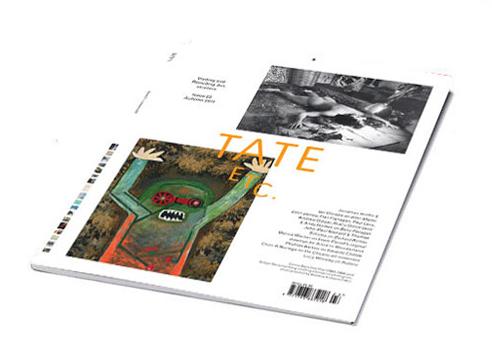
TATE ETC.
Issue 23
Visiting and Revisiting Art, etcetera
www.tate.org.uk/tateetc
Highlights include…
Thomas Schütte on Gerhard Richter
Flan Flanagan and John James on Barry Flanagan
Marina Warner on Lewis Carroll's original drawings for Alice in Wonderland
Sam Thorne on How contemporary artists share Lewis Carroll's love of language
Phyllida Barlow on Eduardo Chillida
Mary Heilmann on Peter Young and Andy Warhol
Philip Tinari on Tacita Dean
Chon A Noriega on the Chicano art movement
Jonathan Griffin and Ian Christie on John Martin
Lucy Worsley on Rubens
Tate Modern's forthcoming exhibition will explore the work produced over almost five decades by one of today's most highly regarded artists: Gerhard Richter. Richter has made art based on his experiences of growing up during the Third Reich, his years as a student in communist Dresden and his defection to the West in the early 1960s. Later, it has encompassed elements of his private life-marriage, divorce, fatherhood-alongside reflections on the ongoing traumas of national history, from German political violence in the 1970s to international terrorism in the twenty-first century. TATE ETC. carries appreciations from John-Paul Stonard and Thomas Schütte.
Barry Flanagan may be best known for his bronze hare sculptures, but his early work using a variety of media such as cloth, felt, clay, stone, plaster and rope challenged more traditional notions of sculpture. It was as much inspired by art as his own experiences of odd jobs-from bakeries to building sites-and, as his friend John James and daughter Flan Flanagan remember here, he combined his innate curiosity with people and his love of life into his art.
When Lewis Carroll made drawings in the early 1860s for his book Alice's Adventures in Wonderland, he was disappointed with the results. He employed cartoonist John Tenniel to create the now-famous illustrations. A cultural historian visited Christ Church College, Oxford, to view the rarely-seen drawings which feature in Tate Liverpool's 'Alice in Wonderland' exhibition.
'"You know very well you're not real," Tweedledum tells Alice. "I am real!" she replies, and begins to cry.' Sam Thorne, p79
'Back in my studio, paper rope coils are being bound in glossy tapes. The paper rope is rigid and recalcitrant. It is difficult to manipulate and the added tape is making it even more unyielding.' Phyllida Barlow, p85
'Warhol was primarily a figurative artist, and it makes sense. The abstract paintings, such as Eggs, as well as his "oxidation paintings" , are the result of his, (probably) non-verbal, engagement with social and critical aesthetic discourse." Mary Heilmann, p81
The Unilever Series: Tacita Dean. Over the years Dean's poetic, meditative 16mm films have ranged from portrait studies of Merce Cunningham and Mario Merz to explorations of historically loaded architectural spaces and the nature of film-making itself. On the eve of the opening of her installation in Tate Modern's Turbine Hall, TATE ETC. examines her enduring exploration of time.
'By the mid-1960s, a new generation of Mexican Americans, now calling themselves Chicanos, would start a social protest movement focused on farm workers' rights, educational access, employment opportunity, and - once again-disproportionate representation in a new war.' Chon A Noriega, p99
The nineteenth-century painter John Martin is best known for his dramatic series of apocalyptic destruction and biblical catastrophe. Critical opinion was divided: writer Edward Bulwer-Lytton thought he was "the most original genius of the age," while John Constable described him as, "a painter of pantomimes." On the eve of Martin's exhibition at Tate Britain-the largest display of his works since 1822-TATE ETC. explores his enduring influence on artists and film-makers.
TATE ETC. - Europe's Largest Art Magazine
Subscribe at
www.tate.org.uk/tateetc/subscribe
Or call +44 (0)20 7887 8959


